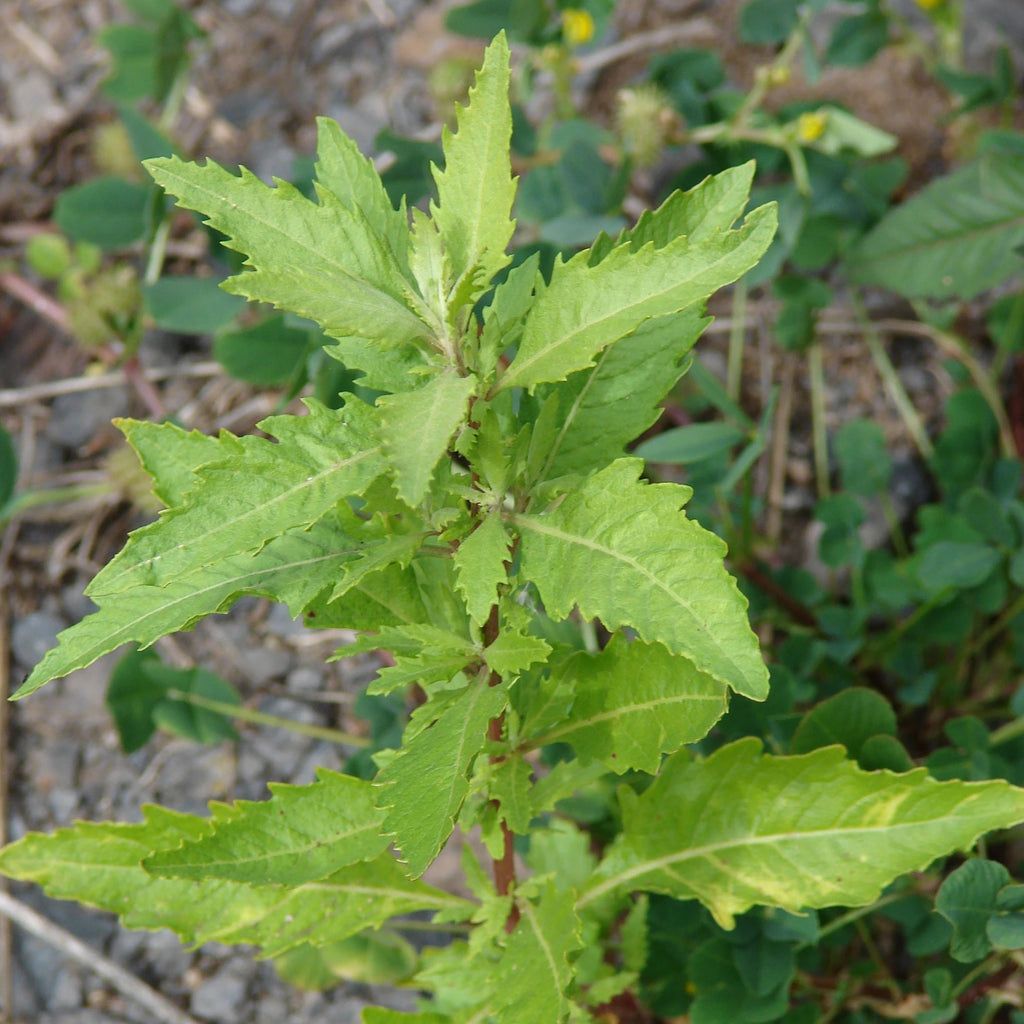While there are many culinary herbs that are safe for daily consumption and can be considered more food than herb, there are also culinary herbs which due to their potency lean more towards medicine than food. Epazote is one such herb. You can find it in the culinary herbs category on our website but it has been used as a strong medicinal herb for centuries.

Dysphania ambrosioides is part of the Amaranthaceae plant family which is home to other well known plants like spinach and beets, although they do not share the same genus. It grows well here in Oregon in our hot summer but did not make it through the winter in my garden. Epazote is native to Mexico and Central America where it grows as a perennial plant. Due to the enormous quantity of tiny pungent seed this plant makes, it definitely can naturalize in your garden depending on where you live. So take care in planting so that it does not overtake your space. It grows to be about three feet high, has serrated bright green leaves and small flowers which will attract beneficial insects to your garden.
According to Armando González Stuart, Ph.D, in a presentation called “ Plants Used in Mexican Traditional Medicine” throughout Mexico there are between 3,000 and 5,000 herbs in use medicinally by many indigenous communities there. Epazote, which is the Nahuatl name for this plant, has likely been used the same way historically for many generations. Nahuatl is the language of the Aztecs and is still spoken by the Nahua communities who mostly preside in Central Mexico. It is used in culinary applications as a carminative and in larger medicinal quantities as a vermifuge. It reminds me of Wormwood in that way. The most common use I have tried is adding the dried leaf as a potherb when cooking beans in order to make them more digestible. They have a complicated taste and aroma that mellows with cooking.
Epazote is also used in other traditional medicine systems like Ayurveda. According to an article “Mexican Tea (Chenopodium ambrosioides) Medicinal uses and pharmacology”, Epazote is used as a leaf decoction, a paste for inflammation, as an essential oil and as a pungent culinary herb. It can be poisonous in large quantities due to a toxin known as ascaridole and it is contraindicated for pregnant women and children. Ascaridole is a monoterpene and gives Epazote its vermicidal abilities. If you do decide to grow this interesting plant in your garden, I suggest just using small amounts of the fresh leaf in your cooking to be safe and seeking the help of a trained herbalist to use it for its more intense medicinal qualities.
Epazote is very easy to grow. You can either direct sow into your garden as the soil has warmed. Or you can sow into flats and transplant. Transplant Epazote once the danger of frost has passed. The seeds are quite tiny so press them into the top of the potting mix and lightly cover with vermiculite. They have excellent germination so no need to sow heavily. For culinary uses harvest the fresh leaves of the plant and add to your cooking. You can use the leaves fresh or dry. The leaves are safer to use than the seeds which contain higher quantities of essential oils.
≈ by Taryn Hunter
References
GonzalesStuart, Armado. “Plants Used in Mexican Plants Used in Mexican Traditional MedicineTraditional M.” University of Texas El Paso, July 2004, https://www.utep.edu/herbal-safety/_Files/docs/Plants-Used-in-Mexican-Traditional-Medicine-July-04.pdf
Plants, Ayurvedic. “Mexican Tea (Chenopodium Ambrosioides) Medicinal Uses and Pharmacology.” Encyclopedia of Ayurvedic Medicinal Plants, Encyclopedia of Medicinal Plants, 29 Nov. 2017, https://www.indianmedicinalplants.info/herbs/index.php/1157-mexican-tea-chenopodium-ambrosioides-medicinal-uses-and-pharmacology.
Web.extension.illinois.edu. 2021. Epazote | Herb Gardening | U of I Extension. [online] Available at: <https://web.extension.illinois.edu/herbs/epazote.cfm> [Accessed 20 May 2021].


Comments (0)